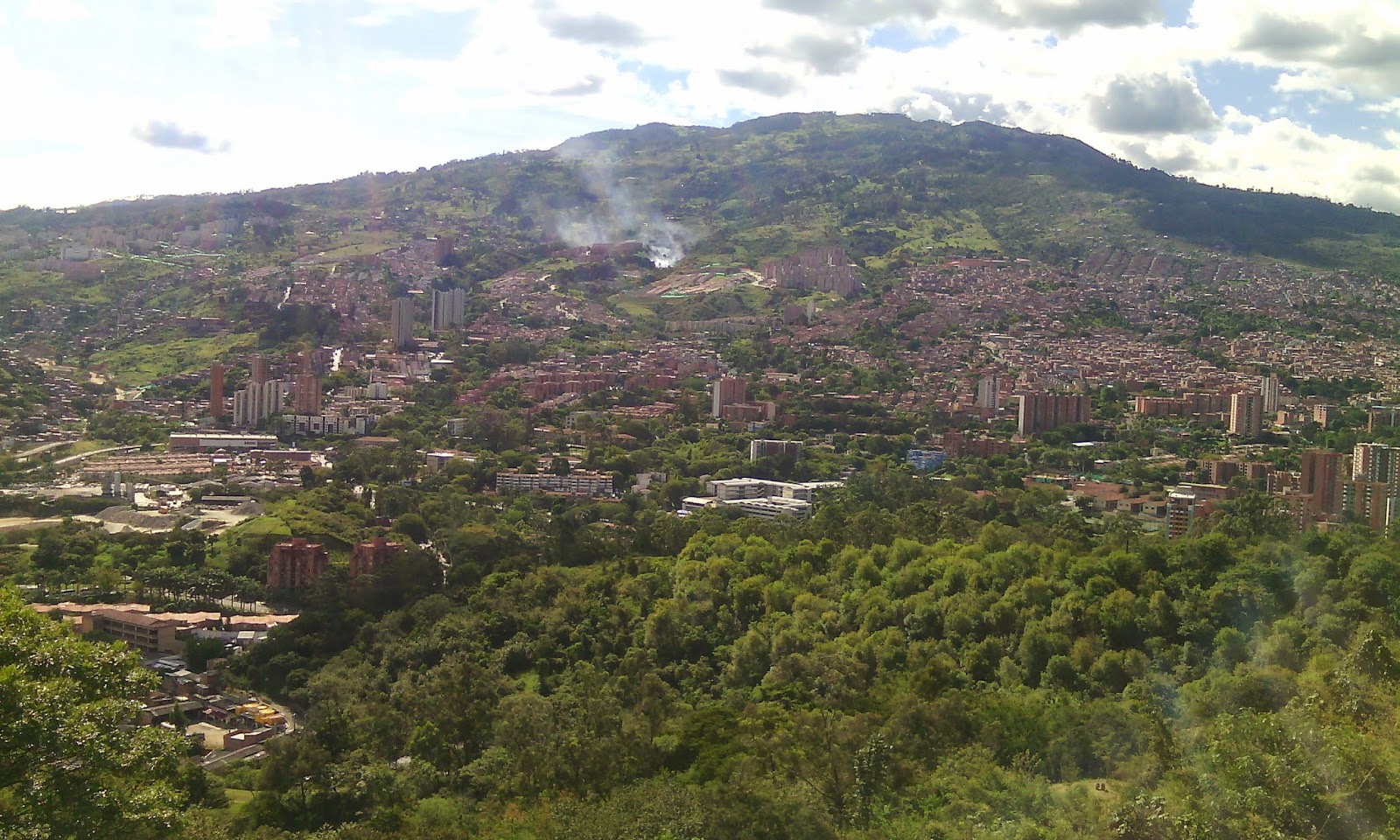By and large the Spanish I learned in Mexico has served me well here in Colombia. But there have been a few adjustments, sometimes actually back to words I had learned in Peru and had to unlearn in Mexico. For Spanish speakers or those who just find literal translations amusing, here are the things I've had to learn or relearn to sound a little more like a Colombian:
First, let's start with the truly unusual, the kinds of words that made me stop and go, "Really? You actually say that?" Interestingly, they all have to do with traffic.
1. At the top of the list is "taco," an extremely common word in Medellín to refer not to delicious Mexican food, but to a traffic jam. It's very common to here people say "hay mucho taco" (literally, "there's a lot of taco") when the streets are packed.
2. Continuing the traffic theme, paisas (people from Medellín) refer to a speed bump as a "policía acostado," literally a "lying down policeman," due to their effectiveness in reducing speeds even when police are absent.
3. "Oreja" is a common word meaning "ear," but I was taken aback when I heard some friends using it to refer to an offramp from a highway that circles back in cloverleaf fashion.
4. "Rompoy" is a word I have only heard one person use (my boss), but from looking it up online it's apparently somewhat common in Colombia to refer to a roundabout, which is normally called a "glorieta." The best explanation I've seen is that it is a corrupted version of the French word for roundabout, “rond-point.”
A few words I knew from Peru have reentered my vocabulary in Colombia:
1. Chévere = cool, as in "that's really cool," the equivalent of "chido" or "padre" in Mexican Spanish.
2. Gaseosa = soda, pop, instead of the Mexican "refresco."
3. Cancelar = to pay (but also can mean "to cancel"). For example, if you're at a bookstore, they may ask you to go to a separate counter where they accept the money in order to "cancelar" your order, then return to the other counter with the receipt to be able to take away your item. It gets a little confusing if you try using both meanings in the same sentence, saying, “La matrícula del estudiante fue cancelada porque no canceló el valor de la clase” = "The student's enrollment was cancelled because he didn’t pay [cancel] the value of the class."
Words for food:
1. Tinto = black
coffee, with or without sugar, usually served in small cups of about 4 ounces. I’ve encountered it especially after church services or as refreshments at
events.
2. Banano = regular banana, which is called a "plátano" in Mexico.
3. Plátano = plantains, a larger starchy type of banana that is fried before eating, called "plátano macho" in Mexico.
4. Tomate = tomato. They don’t use “jitomate” for red tomatoes, as they do in Mexico.
Other words:
1. De pronto = maybe, perhaps. This is much more common than the alternate words for maybe, such as "quizá(s)" (which seemed predominant in Peru), "tal vez" and "a lo mejor" (quite common in Mexico), or the Argentine "capaz."
2. Afán = hurry. For example, "¿tienes mucho afán?" = "are you in a
hurry?"
3. Hincha = fan (in sports). I'm not sure if this is etymologically related to the verb "hinchar" meaning "to swell," but it definitely confused me at first, until I saw article after article on the World Cup talking about the "hinchas" of the different teams.
4. Nevera = refrigerator. In Mexico they use "refrgerador" or "refri" as a shortened form.
5. Barbería = barber shop. I’ve seen both this and the usual "peluquería."
6. Seda dental = dental floss. Literally this means “dental
silk,” instead of Mexico’s “hilo dental,” which literally means “dental
string.”
On the use of tú and vos (informal words for "you")
There is a mixture of tuteo and voseo forms here,
though it seems like only lately I’ve been starting to pick up on people using "vos." Maybe that means I’m
meeting more people originally from Medellín or northeastern Colombia, where supposedly it is more common. According to this map on Wikipedia, Colombia is a very mixed bag regionally in the use of voseo.















